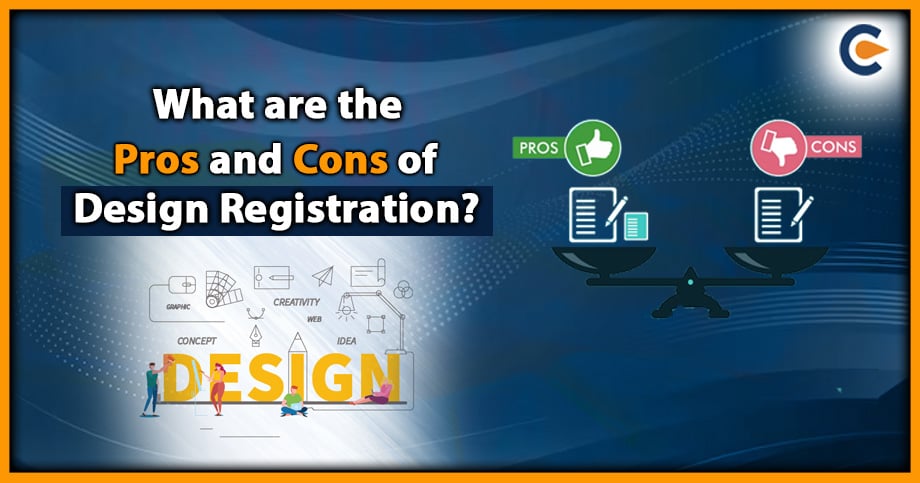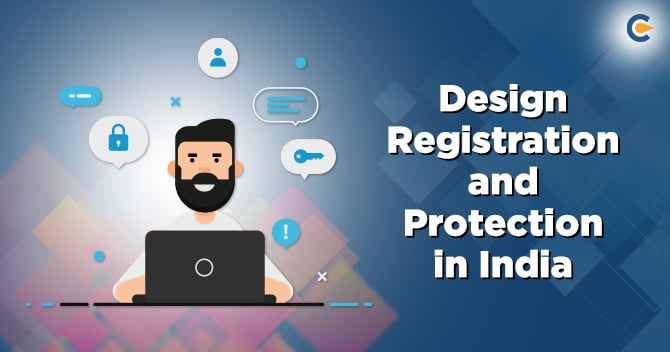The design might be one of the distinguishing elements that need to be protected to prevent copying. Also, you must register your design to preserve it and prevent others from using it. A product’s value can be increased by an industrial design, which can also increase its consumer appeal and engagement. It could be used as a selling factor. As a result, protecting designs should be a part of any manufacturer’s or designer’s business plan. Scroll down to check the pros and cons of Design Registration.
What is Design Registration?
Before we discuss the pros and cons of Design Registration, let’s discuss the consent of Design Registration and all the requirements for Design registration is a legal procedure that enables creators and companies to guard against unauthorized copying and usage of their distinctive designs. It offers some degree of legal security and exclusivity, which may help to preserve the value of a design and give its owner a competitive edge. Generally, the design must be new, unique, and not excessively similar to other designs. Working with a lawyer or intellectual property expert may be necessary during the lengthy, expensive, and time-consuming process of design registration. But after a design has been registered, the owner has the legal right to stop anyone from using, duplicating, or stealing the design for ten years.
What Is Meant By ‘Design’ Under The Designs Act 2000?
The term “design” refers only to the features of the shape, configuration, pattern, ornament, composition of lines, colour, or combination thereof applied to any article, whether two-dimensional, three-dimensional or both forms, by any industrial process or means, whether manual, mechanical, or chemical separate or combined, and which in the finished article appeals to and are judged solely by the eye. It excludes any mode, principal, construction, or anything else that is in mind.
What Are The Effects Of Registration Of Design?
Design’s registration grants the registered proprietor “Copyright” over the design for the duration of the registration. The term copyright refers to the sole authority to use the design on a product falling under the category for which it is registered.
Requirements of Design Registration
Several requirements must be met by design. The purpose of these requirements is to guarantee that the design is unique and not a copy or imitation of another design. The following are some requirements that must be fulfilled to register a design:
- The design must be brand new and unique, which implies that it cannot have been previously published or made public before the application date.
- The design must be original and distinguishable from any other design that is already in the public domain. It should not be a combination of modified or previously existing designs. The designs should not have been copied from any other source and should instead showcase the creator’s unique creativity.
- The design must be usable in the industry.
- The design should be non-obvious.
- It must be connected to the design, pattern, configuration, or decoration of the registered product.
- The article’s design element should be distinctive.
- While submitting an application for registration of a design, mental activity for the creation of a novel and distinctive design should be present.
- The design must stand out as being notably different from other existing designs.
- It should not be sensational, indecent, or immoral.
- It shouldn’t be subject to section 4 of the design act’s regulations.
Pros and Cons of Design Registration
Following are the Pros and Cons of Design Registration:
Pros of Design Registration:
- Exclusivity and Legal Protection
The legal protection that comes with design registration is one of its most important advantages. After your design is registered, you have exclusive rights for a certain period of time. This implies that no one else will be able to copy or use your design without your consent. You have the right to sue people who violate your design.
- Use of Design Registration to Prevent Infringement
Design registration acts as a deterrent to infringement. Individuals are less inclined to copy your design if they are aware that it is protected by law. They do this because they are aware that if they do, you have the right to sue them.
- Economic Benefits of Design Registration
Economic advantages can also result from design registration. You can charge others to licence your design if you own the exclusive rights to it. This might give your company a consistent flow of revenue. Also, if you ever decide to sell your company, having a legally protected design can help it attract a higher price.
- Building Brand Identity and Reputation
You can build your brand’s reputation and identity by registering designs. When your design is protected by law, it distinguishes you from your rivals and shows that you are committed to quality and creativity. This can assist you in gaining new clients and a solid following.
- International protection
Design registration can give your design worldwide protection if you want to conduct business in other nations. This can benefit you in avoiding legal issues and defending your intellectual property rights abroad.
- Use of Design Registration to Secure Investment
Design registration can help you in securing money if you are looking for investment for your company. Investors are more inclined to fund a company that has intellectual property rights that are legally protected.
- Protection Against Counterfeiting
Design registration can offer protection against imitation. Since your design is protected by law, it is simpler to spot and stop counterfeiters who attempt to use it without your permission.
Cons of Design Registration:
While there are many benefits to design registration, there are also some drawbacks to consider before deciding to register your design.
- Time and Cost Involved
- Possibility of Rejection
- Limited Protection and Exclusivity in Some Cases
- Limited Duration of Protection
Is Design Registration Worth It?
After discussing the pros and cons of Design Registration, now we can discuss is Design Registration worth it or not. A helpful instrument for protecting the intellectual property of companies and creators is design registration. It offers legal defence and exclusivity, which can stop others from making use of, stealing or copying the design. This can provide the owner of the design with a competitive edge and help preserve the value of the design. Moreover, design registration can be utilized to stop infringement by third parties, which can be expensive to fight through the courts. It can also help build brand identity and reputation by providing a level of legitimacy and recognition to a design.
When determining if design registration is worthwhile, there are a few drawbacks to take into account. There is no assurance that the process will be accepted, and it can be expensive and time-consuming. The value of design, the likelihood of infringement, the expense and the time associated with registration, and other factors play a role in whether or not it is worthwhile to register a design. Design registration can be a wise investment for some companies and creators who place a high value on their designs or who face a significant risk of infringement. Others, though, might need help finding it necessary or beneficial.
Conclusion
After discussing the Pros and Cons of Design Registration it is clear that for creators and businesses seeking to protect their intellectual property rights and establish a distinctive brand identity, design registration is a crucial tool. Although the registration of a design may take some time and money, the advantages it provides in terms of legal protection, exclusivity, and financial rewards make it a valuable addition. In the end, whether or not design registration is beneficial will depend on the particular requirements and objectives of your business or design project. Creators and businesses can decide whether to pursue design registration as a means of preserving their priceless intellectual property by understanding the procedure, its advantages, and disadvantages.
Read Our Article: Do’s And Don’ts Of Design Registration











